Back in 2018 defence analyst Stuart Crawford wrote an article in the UK Defence Journal entitled ‘Challenger 2, the wrong tank for the British Army?‘, in which he argues Challenger 2 was selected due to patriotic reasons rather than practical reasons.
While Mr Crawford raises some legitimate criticism of the vehicle, and regardless of one’s personal opinions his position as an officer in the Royal Tank Regiment must earn him some respect and authority on the subject.
This article was submitted to the UK Defence Journal by Harry Bulpit.
I, nevertheless, have my own criticism of his argument and within this article I hope to argue why Challenger 2 was the correct tank for the British Army, at least at the time of its selection.
The initial concept for Challenger 2 can be found as early as 1980 with the “Future Tank Policy Study an Examination of The British Army’s Tank Requirements Post 1995” report. Which highlighted, due to the acceptance into service of what is now known as Challenger 1 to replace only half the tank fleet, the requirement to replace the Chieftains still in service by 1995. This meant that from the very outset what was to become Challenger 2 was expected to serve alongside Challenger 1.
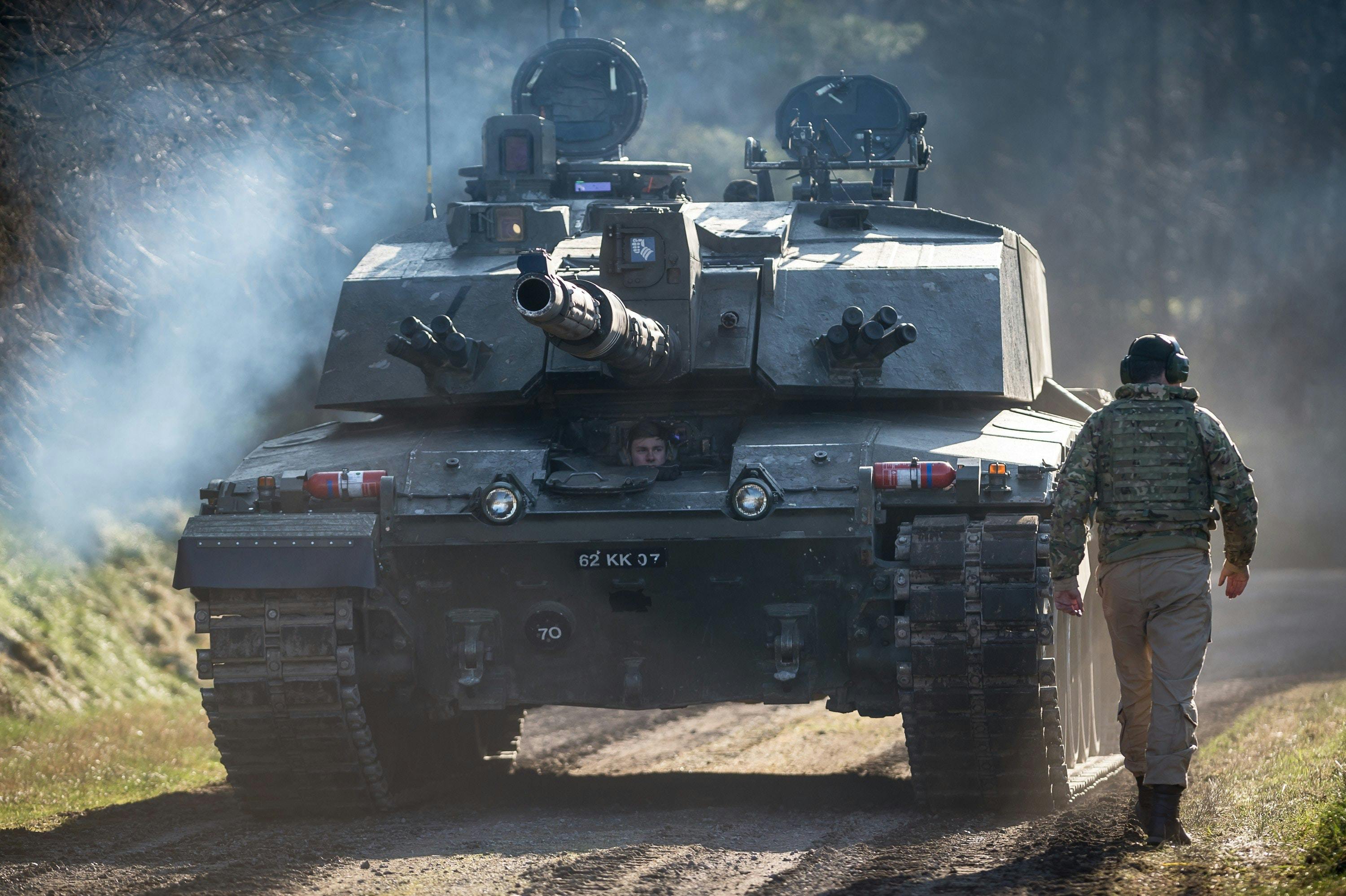
As such on the 30th November 1987, the MOD released Staff Requirement (Land) 4026 (SRL 4026), otherwise known as ‘Staff Requirement for the Replacement of Chieftain’. This was an outline of the criteria that any new tank was expected to meet if it was to be selected as a replacement for Chieftain, with the requirement for interoperability with Challenger 1 being paramount.

Here lies the first major criticism of Mr Crawford’s article. One of his primary arguments against Challenger 2 is the inability for it to use NATO standard two-piece 120mm ammunition. While this indeed has become an issue in recent times, it neglects the reality at the time of the trials that the MoD placed a greater emphasis on the tanks ability to have round commonality with the then in-service British tanks as opposed to other NATO tanks. Even when considering the Leopard, the MoD was interested in whether it was feasible to install a rifled gun into the vehicle.
The other significant argument of Mr Crawford is the perceived reliability of Challenger 2 steaming from the supposed “poor record of Chieftain and Challenger 1”. This, however, seems to be a rather odd comparison to make retrospectively given Challenger 1 exceptional performance in the Gulf War.
It is also worth noting that another individual who was part of the in-service trials, noted that when evaluated Challenger 2 had a reliability rate of 67%. While below the initial target of 75%, it was significantly higher than Leopard 2 at 32% and the Abrams at 14%. Mr Crawford also makes the argument that often the purchase of a foreign vehicle by multiple nations is an indication of its credibility. He even points out the export success of the M1 and Leopard compared to that of Challenger. While this can sometimes be proof of a design’s success, it is not always the case, even the Chieftain which is described in the article as a “sluggish and unreliable vehicle” saw much export success. Also, it should be considered that Challenger 2 was designed to meet the need of SR(L)4026 and it was within this context that it was judged.

It was not judged by the British Army with the same requirements as say Greece and Denmark may use to judge a tank.
Mr Crawford instead argues that Leopard or the Abrams should have won the design competition and that Challenger 2 was selected on the bases of national pride. Besides the counter arguments given above it is important to appreciate that when spending a large amount of governmental and therefore public money, the government is not only concerned about the end user but also how to benefit as many people within the country as possible. Mr Crawford does state his appreciation of the “argument for Britain to maintain its own tank design and production expertise” but seems to suggest this is a moot point since “both foreign contenders pledged to set up their production lines in the UK”.
Indeed, while Krauss-Maffei believed that 60% of production of a British Leopard order could be fulfilled within the UK this did not necessarily mean it would bring much benefit. This was shown with the Swiss experience of domestic Leopard manufacturing which took two years of additional contract negotiations following the actual selection of Leopard. This resulted in the Swiss purchase cost increasing by 25%. Plus, Vickers defence industry required as much work as possible to maintain jobs in its factories across the North of England, with one worker at the time stating that contracts for Vickers defence was crucial for maintaining employment within his area of residence. Trying to maintain the livelihoods of as many citizens as possible is not a sign of jingoism but rather of decency on the part of a government.
It is also important to appreciate the support provided by Vickers defence industry at the time of the First Gulf War to the British Army. This demonstrated the usefulness of having a totally domestic supply chain at a time of war.

Overall, perhaps it is true the Challenger 2 is not the best tank in the world, nor has it perhaps produced the best outcome for the British military and industry and perhaps it is time for Challenger 2 to step aside for a new foreign built tank. But besides the multiple practical benefits of the challenger 2 over its rivals in terms of Britain’s specific requirements.
It is important to remember that the armed forces of a country are an extension of that country’s Government and people and as such should support those people in anyway it can. With this in mind, it would seem that at the end of the 20th Century, Challenger 2 may not have been the best tank in the world, but it was the best tank for the British Army, British industry, and the British people.




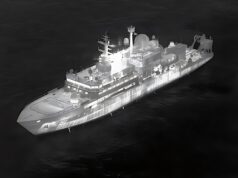
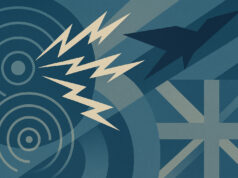
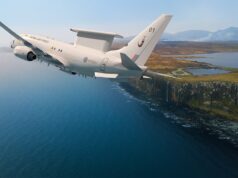
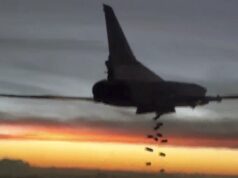
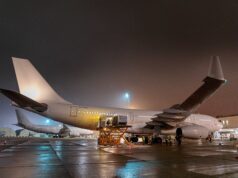

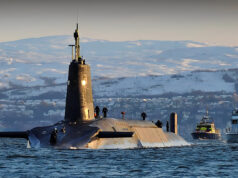
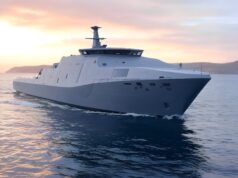


And for a period many would argue it could stake a claim to being the best tank in the world or very very close to it.
Its current situation is 100% the fault of dithering politicians and their suited monkeys in the mod, not a fundamental fault in the design of the tank or its selection. Nobody could forsee the stupidity of it going a quarter of a century with no updates being carried out!
Wholeheartedly agree.
Agreed. Senior generals have clearly not lobbied hard enough for delivery of upgrades, all of which have been planned and costed. Most other nations tanks would have had 2 or 3 significant upgrades over a 20+ year period.
Well done Harry. Nice to see articles from one of our own regular posters.
Thank you for the encouraging words.
A good article and great to have another guest contributor.
If Challenger 2 had won just 1 major export order it might have given the programme the boost and economy of scale it needed and helped to encourage upgrades and further development with a foreign partner. Unfortunately, a bit like Eurofighter, it fell into a gap where it was the ultimate cold war tank, just when nobody else really needed a high-spec new tank and the market was flooded with second-hand Leopards. At the time is was absolutely the right decision and the failure of successive governments and military chiefs to upgrade it is a separate matter entirely.
We now see consequences of the Elswick and Leeds plants closing which is the inability of UK industry to design a new turret for even an IFV, the delays to AJAX at a plant which is more an assembly hall than a true manufacturing facility, and British engineers being sent to Germany to learn how to weld bits of Boxer together.
If a war broke out in 2025 and the UK didn’t have the support of the EU, how much of our power-unit and transmission spares could be domestically sourced?
Thank you. I’m glad you enjoyed my article.
I agree that the only overseas order, the order from Oman of 38 CR2s was hardly a major order. As well as the reasons you state, I think there was also a security issue and a price issue which held back sales.
In the short term, an update/upgrade of the Challenger 2 makes sense.
For a long term replacement, joining the Italian/Polish/other joint venture for a new MBT also makes sense.
I would still like the British Army to have a lighter, easily deployable tank, as well. The US has a medium tank competition running at the moment. Either based on the Ascod or the Bradley. 30 to 38 tons depending on which one wins. The US Army wants 500, the USMC is thinking about 100. I have no idea if Biden will back it or scrap it. It could be a modern Honey/Stuart/Bradley for the British Army. 75 maybe?
Glue a 105mm gun / turret combo (a la Griffin for the USA) onto the Ajax, they could be built at Merthyr Tydfil. Jobs, British, extra platforms, what more could you ask for?
I seem to recall reading that the Merkeva was built on the innards of the Centurion. As such, apart from the all singing dancing electronic gizmos and anti missile stuff, how difficult is it to design an build a British version. Is there not a point to having a rear door?
Now there was a tank, the Centurian. When I joined the Cent was still in service as the AVRE and the recovery variant in armoured regts ( I was never armour tho far to dangerous) Wne i was in Bloenfontein with 44 Bde the SA lads still had Centurian gun tanks, updated obviously and the crews loved them. Still were the most effective tanks in the region.
Apologies for my spelling, phone is to small for big hands carrying a beer….
I know the feeling myself… Sausage fingers and touch screens are not a good mix!
Israel followed the suspension of Centurion and nothing more afaik. The whole concept is different with engine in front, turret in rear.
Seems that Cheftain got some Israeli influence since they were supposed to buy it.
Merkava rear door is useful but also a vulnerability.
I was guessing that the rear door would be useful in urban areas, and there is a Merkeva inspired IFV. Isreal has its specific requirements… but so do we. Isn’t our requirement just as likely to be in an urban environment as the north German plain? Using tanks (an armoured box) to move people and equipment and retire with wounded has a point(?).
There was a Fire Support version planned once.
A bigger gun ?
Ajax + Leonardo Hitfact 120mm turret
A decent design why not just buy 500 more of these then scrap the challenger
If anyone is going to be glueing anything military, the work should go to BAE Systems… World class experience in glueing together military hardware…
Straight face on, what excellent piece of work, thankyou.
Should be Honey/Stuart/Chaffee.
Comet.
I was thinking about US light tanks in the British Army during WW2. Comet was the best British built tank of WW2. Shame it did not reach the troops six months earlier.
But a nice name!
Agreed. It does not seem likely that our MBT fleet will grow in size so upgrading what we have must be the best option. For the future, it is imperative that UK regain the capacity to design and build our own military equipment. The Warrior fiasco and the Ajax programme show how much know how has been lost. If no private company is capable, then we need to set up a state-owned operation, like France or even USA with its Lima tank factory.
One reason why defence spending in France has widespread support from political parties of all stripes, is that most equipment will be made in France,maintaing French jobs. Our poorly thought out privatisations mean we can’t even design and build a new army rifle!
The Lima plant is GOCO (General Dynamics), so does that count as a state operation? Possibly? The Ajax program (again GDUK Ltd) is a UK project. Admittedly the POD vehicle was ASCOD but Ajax bears no real resemblance to that platform. All of the internal gizzards are UK designed.
Lima is a strange arrangement. I mentioned it as an option the UK could have chosen to ensure a capability was retained. Instead,given a lack of orders,BAE was able to sell off sites for redevelopment. I find it odd that we spend enormous amounts to keep warship building capacity, but don’t apply the same approach to land weapons. Given that most afvs are hand made ( unlike a robotised car plant), a single plant could build a range of vehicles, thus addressing the problem of sporadic orders for any one system.
I agree Peter. We need to design our own AFVs. Why not use as much commonality with Boxer even if the parts are arranged differently!
We do first need to know what we want. We hear arguments that Ch2 is so outclassed that it must have a new gun and turret. Then other leaks suggest we don’t need MBTs at all. Both can’t be right. We are running massively expensive programmes to upgrade Warrior (so that infantry can keep up with the tanks)and deploy Ajax ( so they can carry out reconnaissance for the tanks) but also cast doubt on whether we need tanks at all. This is not a mess wholly of politicians making: army leadership has seemed clueless.
The best solution, given this lack of clarity, is to bring the Ch2 s back up to scratch. Avoid the pitfalls of a new turret and gun, just upgrade fire control and powerplant.
Then take time to decide what we need in the longer term.
I would suggest something more along the lines of the Japanese T10 tank with its removable armour. Starts out at 40t & goes up to 48t if fully up armoured. Less constrained by bridges & easier to transport. As US has (finally) discovered – ever increasing mbt weight has its problems. Works fine in places like Iraq, not so good in places like Afganistan. UK is not expecting to fight its tanks at home (unlike say – Poland), so versitility while still being relevent may be worth considering.
Did BAE not once offer an upgraded C2E variant? I also note that US has often stripped its M1A1 tanks back to basic hull & rebuilt them as new.
BTW – good job Harry!
I agree that the CR2 LEP needs to be rolled out ASAP to push its service life out to 2035, and plans set in motion for a tank after that. Whatever is fielded in the future after CR2 LEP, must be able to take on the T-14 Armata (with any upgrades that are fielded for T-14 over the next 10-15 years). Would a medium tank do that, or do you propose a medium tank in addition to CR2 LEP to deal with sub-peer opposition?
At the end of the cold war, the British Army had 900+ tanks. Some would say Brimstone from fast jets + Apache gunships, reduce the need for tanks. I agree to a point, but you cannot keep air assets circling above all your troops 24/7. You need tanks with your Ajax/Boxer/Warrior armoured vehicles. I think the UK needs 300 tanks. 225 heavies such as CR2, upgraded for now. We should replace it with the Italian/Polish venture, the French/German venture or the US M1 replacement that they have just started looking at.
However, I think we need 75 medium tanks, to go places the heavies cannot.
If you are going down that route look at the South African Rooikat it weighs +-31tons has incredible speed and great off road performance with a 105mm or 76mm gun
Sorry to post again on this Love filled site but, It was designed and Built for Iran originally. Sorry to post here again.
Challenger 1 was. Not Challenger 2.
Yup. I was expecting that.
Jees, You guys are great…………. A site full of Trolls and Acolytes …… lol…….. I’ve been taking the piss out of you all for years and It’s been hilarious reading all your replies lol……. Halitosis cracks me up no end , as does Billy Fucking no mates ” I’ve been here for ever ” ………….. Enjoy your moments of Fame chaps….. Nothing I have ever Typed on here was true……… just taking the fucking piss out of you all.
Take your meds son
Steady as she goes Capn.
How are still allowed to post on here ? I got banned for posting pro-BREXIT comments in the run up to the referendum !!!
How are you, sorry.
Yes but is a fundamental point, CR2 was developed for the domestic market not Iran. It is not about being a Troll or Acolyte, just an appreciation of reality.
If you are here to rip the p1$$ rather than constructively contribute maybe find a new home?
Capn I believe that was chally 1. But in the day, when the Shah was knocking about Iran was quite a good customer and sensible ally in the region. I think Oman had it as well, called it Khalid methinks….could be wrong tho!
Jordan has the CH1’s ,Oman has the CH2’s .
I’m quite intrigued about the recent BAE Rheinmetal proposal which incorporates a Leopard turret with a 130mm smoothbore gun, new optics and an upgraded power pack on a Challenger 2 base which would be mainly built in the UK.
Good article. It was the right tank at the right time. The issue we have now is that due to dithering and politics, and the occasional CDS who should know better, the tank while effective, does have a lot of obselence issues. Most of us know what should be done, keep them, modernise them, and ensure we maintain this capability. Plenty of people shout about the days of heavy armour are over, drone this, Unmanned that etc….but unless you have experienced what a challenger can do and give, both in terms of firepower, protection (not just the crew but us targets on foot) and morale then you will not realy understand. As long as a military may be required to take and hold contested ground then there will always be a place for heavy armour. Cheers all.
Armenia just lost a war. Two hundred and thirty tanks in one report. Lost to flights of drones dropping bombs from directly overhead.
I think the estimation by one unnamed MoD person some years ago that tanks are obsolete is a fair one.
No, what’s true is if you lose the air battle especially in open terrain you pretty much lose the war. Gulf war 1 is an example of that & it was in the end actually won by massed armour. How much ground was conceded to the Drones?
Tactics & proper organised SHORAD + other countermeasures need to be in place. I am pretty sure that I saw troops walking also being killed by drones? At least tanks AFVs afford some Protection
Correct mate, war is won by a force able to use and operate, in a trained and knowledgable way, combined arms operations. One asset on its own will always lose and take losses, no matter what it is, it’s a combination of said assets that have trained and operated together which win wars. Cheers mate.
War is a combination of all different assets, assets which they didn’t have in a trained and efficient combined force. Tanks and armour are never outdated, they just have to evolve to the threat. And with all respect too a single unnamed MOD person, it would be interesting to see his knowledge and direct experience of the subject……i wonder how long it is that ammunition is outdated as we are now utilising lasers…..??????
Yes I’ve even heard some willing to argue that all conventional forces are outdated in the face of a nuclear power. Reality and experience does not seem to matter for some arguments, sort of like any extremist really.
This is one of those endless and undecidable questions. What is better than nothing? Nothing?
It performed well in most reports I have read. Its testing in the Gulf were no very useful guide since our main ally gave it a lesser roles on both occasions. Performance where this can be compared seem to be quite favourable. However, the need was to support our allies in combat and the U.K. achieved those tasks well enough.
I do wish we wouldn’t talk down ourselves. The others do that for us better and without being paid.
When you hear of the fire some of the challys have received in combat and survived with crews intact i think its combat record speaks for itself, when you read and see images of Leopard and Abrams destroyed I know which one I would rather be Long overdue an extensive upgrade of power-pack systems and gun /ammo
I agree, i dont think there is any debate, its still the best protected tank in the world which is the most import feature of any MBT. The powertrain, optics and digital architecture should not be that difficult to improve which will keep it relevant until 2030’s when it can be replaced by a joint venture with Sweden and Poland if they are up for it.
Or more likely just take whatever the German’s build.
Spot on mate, while I was never a tankie, or armour, always light role, on occasion I deffo appreciated the kinetic and morale effect those lads had on the enemy. And you are spot on with Poland, on the ball, current tip of the spear, know the danger and able to think, train and deploy weapon systems we are all thinking are outdated or far to expensive. Cheers mate.
A very enjoyable and we’ll reasoned article Harry.
While it remains to be seen if CH2 escapes the upcoming Defence review, in my view it’s a numbers game really.
Below 250 and it becomes incapable of being deployed in Divisional strength.
As has been pointed out, unlike our Polish friends, we don’t expect to be involved in rolling armoured warfare in the Kent countryside!
Our only real reason for retaining Challenger, is deployment in Divisional strength (80-100) as part of a combined operation with our American and NATO allies, in the NATO area of responsibility, or further afield.
So, assuming it survives the review and in its current numbers, it should be updated and upgraded, I don’t have an issue with the main gun, still perfectly capable of taking out enemy tanks, so it should do for another 15 years and into retirement.
Swapping out the main gun will invariably mean a new turret, that in turn will mean an out of control budget and delays…
If the review cuts numbers to 150, then in my opinion, it’s lost its main reason to be retained. I would get rid and invest in additional air mobile forces, increase air transport capability etc.
As to the future MBT question, a lot depends on the future shape and size of the Armed forces, bit of an unknown quantity there.
Aren’t we already at sub-250 tanks operational? Three Regular and one Reserve regiments of 56 or so tanks IIRC and one of those is transitioning to Ajax. If it’s taking half of the tank force to put a hundred tanks on the field, which personally I would say is more a brigade than division, what contribution is that really? I know there’s an attachment to tanks and seeing the first Army to use tanks retire them, but shouldn’t there be consideration of retiring them for increasing the capability of enabler forces, cyber units, precision fires etc.
Hi Ryan,
I believe we have an active fleet of 250, my number of about 100 was based on use over the last 30 years, i.e 125 ‘ish’ (give or take) tanks, forming the heart of a UK armoured division.
Drop below a total fleet of 250 and you cease to be able to deploy tanks in the critical mass needed to make a useful contribution in another Gulf War type operation.
The MOD bean counters, will see little point in upgrading or keeping 150 MBT’s if they arr’t available in sufficient numbers to deploy and off to the scrap yard they will go….
There is an argument for that, but as long as a force is required to take and hold ground, there will always be a need for armour and tanks. In an ideal world, we would have more, or each NATO country would concentrate on specific capabilites and we would all work together seemlessly. However once we lose a capability its pretty hard to get that back. Trust me, its better to have a few, than none, as if you have the seen the kinetic and moral effect a tank (or two) can have both on FF and EF, then you will understand the reasoning. We just need to ensure they are modern and relevent. Cheers.
I can see the arguments and reasoning for keeping them, definitely. But we seem to be failing to keep stuff up to date and I can’t for the life of me understand why. Others seem to manage, though I’ll admit that may be a wrong perception.
The ability to kill the enemy is the most important thing, firepower is the most important aspect of a tank.
WW2 taught us that.
Re the replacement i would also include the likes of Ukraine, who have a decent design team and have used auto loaders for a considerable time , they are still fighting against Russian backed forces and should have learned lessons of what modern battlefield requirements are
“When you hear of the fire some of the challys have received in combat and survived with crews intact”
How many Kornets Challengers took?
Disclaimer: I like the CH2, and I’d agree with Harry and others that it was the right choice at the time. Airborne surely knows what he’s talking about from experience too, so I don’t doubt that it’s worth having an MBT.
That said, the comparisons with the combat seen by Leopard 2 and Abrams tanks is a little unfair.
Officially and in the public space CH2 has only been on the receiving end of 1 ATGM ( a Milan, which I don’t believe has a top-attack mode), in southern Iraq. The burning Turkish Leopards we saw on the news were all old models, and were hit in the flanks and rear by covert ATGM teams with TOW and Kornet missiles, which are newer, larger warheads than the Milan. For sure, CH2s have shrugged off plenty of RPG hits, but they’re not in the same league as ATGMs.
Same with the Abrams, fully specced American ones were mainly taken out by enormous IEDs (some up to 500 kg of plastic explosive, with 155 mm artillery shell to set it off). The other main killer seems to have been fires entering the engines from externally carried fuel and/or ammunition.
I’m not criticising the CH2 overly, but it hasn’t been used in the same intensity of combat / hasn’t been exposed to the same threats that Leopards and Abrams tanks have. That is partly due to the high levels of training British soldiers have (especially when compared to Turkish forces), but also down to opportunity- British armoured forces in Iraq never fought a battle like Najaf or Fallujah. No disrespect intended, Basra was more than unpleasant enough and I’m sure that British forces would have made a good showing of themselves if they had been involved in the battles further north. But if they had, I think we’d also have seen more CH2s lost to enemy fire.
Yep. No British serviceman has died in a Challenger 2. Only one tank has been destroyed in combat and it was a blue-on-blue incident. And apparently one crew sat all nice and cosy as 15-odd RPGs were fired at them in Iraq, the tank was recovered and was back in service 6 hours later..
Solid article Harry, nothing to particularly quibble in your analysis. The sad reality is hindsight is all very well but there were solid reasons for UK Gov to adopt CR2 especially in a logistic sense. CR2 was meant to be a Chieftain replacement supplementing CR1, nobody at the time was expecting UK armour to be cut back in the way it was!
My contact who was on the CR2 trials unit is vocal that at the time he would have prefered Abrams at the time “to be a s close as possible to the Yanks supply chain wise (sic)” but he also sings his praises of CR2 as an MBT especially vs Chieftain and Leopard 1 both of which he had commanded in his career (no more details on the latter as it is not my place to out someone with a long military career and is actually back in providing training on CR2 for new recruits). He does have dark views about Warrior on the other hand…
Keep it up, pondering what my next article will be…was going in one direction then something else has cropped up that is worth comment.
Thank you for the positive feedback, I’m glad you enjoyed it. The Abrams was wanted by the army before Challenger 2 even existed. It was only the instance of the PM, that led to the tank competition.
Nice piece. I liked that fact it linked the geopolitical balances around the decision making, sovereign capability, strategic workforce and industry as well as strategic balances around potential benefits vs risk for logistics.
As a lot of others have pointed out the fact HMG has failed to appropriately update the vehicle did not make it a poor choice at the time and as I understand it was as good as any contemporary at the time, but with a greater balance towards protection over mobility compared to contemporaries.
Interesting to see the same old the tank is dead arguments. Especially with examples of how susceptible they are to an enemy with air superiority. This of course ignores that fact that the same argument could have been used in 1945 when the Heers panzerwaffe formations were destroyed by allied air power. All that really shows is the importance of not losing control of any domain within a battle space, not that tanks were or are irrelevant.
Thank you for your positive feedback. I’m glad you enjoyed the article.
Great piece. Good read.
Thank you. I’m glad you like it.
It’s a very interesting read, this and a credible argument to the original article. There is no such thing as a perfect tank, even the Americans,who seem to have bottomless pockets, don’t have a perfect one with their Abrams. In fact, I would say that going into Gulf War 2, the Chally 2 was a far superior tank to the Abrams and you’ll probably find that most US tankies would agree.
What’s causing us trouble now is the fact that they have improved the Abrams massively and the Chally 2 has stood still, in suspended animation, so sadly she’s been left behind…… which annoys me a lot. We need to either upgrade the whole lot (including the mothballed ones) with the Black Knight package…. better optics and targeting system, bigger engine, new turret, relocate GPMG and replace with a .50 or GMG but keep the gun I think….. or, look for a World beater from abroad. WE HAVE NO CHOICE ANYMORE, OUR PEER ADVERSARIES HAVE MODERNISED THEIR TANKS. IT’S A NO BRAINER FFS!!
Thank you for the positive feedback.
ED. I’ve had a comment on this post deleted. As I don’t think it contained anything contentious, could you advise which of your rules it broke so that I can avoid making the same mistake in future?
I found a video on Youtube dated 7 Jan, saying the US is at the early stages of finding an a M1 Abrams replacement. They took some serving tankers & showed them 4 new tank concepts. They released basic details of 3 of them. The lightest had a 120mm gun & weighed 55 tons. The other 2 had a gun bigger than 120mm but actual bore not stated. Perhaps 130 or 140mm? They were thinking of cutting the crew from 4 to 3, but then thought maybe make the 4th guy a UAV operator?
So another option is to upgrade CR2 for now & go with the new US tank, when & if it appears, a decade from now?
Should have added the weight of the other 2. 60 & 65 tons.
I enjoyed the article, Harry. It is interesting to have a counterpoint to Stuart Crawford’s article, which I also enjoyed, but that contained some worrying examples of a prejudice common amongst ‘tankies’ at the time against a Vickers Defence Systems product to replace the half-fleet of Chieftains, rather focussed on factors such as: reliability and availability; interoperability; and cross-country speed.
Chieftain certainly had a worryingly low level of reliability in peacetime in large part due to the Leyland L60 engine part of the powerpack – it was certainly a problem to slavishly adhere to the 1957 NATO decision to fit AFVs with a multi-fuel engine (tellingly Rolls-Royce withdrew its diesel-only prototype for the Chieftain engine sub-contract) and then to take essentially a bus-like engine and over-tune (and hence over-stress) it. The Horstmann suspension gave a bad ride and limited cross-country speed. But all this was ancient history, given that much of Chieftain was designed in the late 50s/very early 60s. Spare parts supply was problematic. A bad impression overall, like mud, stuck – and the brilliant design features, excellent gun, low profile and well sloped thick armour were all but forgotten.
Challenger 1 was far better than Chieftain in every way but reliability was far from exceptional which led to modest availaibility for field deployment. One issue, which Stuart might like to draw a veil over, was that tank crews were not always as diligent as they might have been at doing their checks and maintenance jobs. Another issue is that maintainability for crews and REME was not good – the drivers jobs, the commanders checks and REME jobs all took far too long. Again spares supply was slow and problematic. Before Gulf War 1, the tanks reputation for reliability & maintainability and hence availability was far from stellar, only somewhat improved from that for Chieftain.
When Gulf War 1 occurred there was general amazement at the high equipment availability of CR1, all of a sudden. This was due to great work by Vickers field service teams in adapting the tank for the desert, vastly increased diligence by drivers and commanders to checks, crew jobs and servicing and an enormous supply of spare parts for crews and REME, (the latter being a story all of its own – and not a truly happy one).
I certainly recall that senior officers involved in the Chieftain replacement competition had ranked Leo2 top in the ‘run-off’, although I was never so sure that it was proven to have as much armour protection as CR2. Abrams I thought had been essentially rejected in the final cut due to its very high fuel consumption (a study was done which showed a huge increase (3 or 4-fold) in fuel tankers and their drivers would be required) and the fact that it had no auxiliary engine to deliver electrical power for turret services when the tank was leaguered up.
Ultimately politicians (not soldiers) pushed very hard for (and insisted on) a British product.
Many might find this intersting: https://api.parliament.uk/historic-hansard/commons/1988/dec/20/chieftain-tank-replacement
Graham,
“an enormous supply of spare parts for crews and REME, (the latter being a story all of its own – and not a truly happy one).” I was involved in this sad story from a very practical view, stripping Chally’s in Germany down to bare hulls (which unbeknown to us then warped as we towed them around (the powerpack was a stressed member).
MIT. RIP?
MBT. RIP.Sorry.
no canada has reversed its decision on mbts and bought some temporary ones from the us….. russia also has renewed its fleet with mixed results in syria, the uk will stick with chalenger2 upgrade( black prince)i think…..
I believe the Army need to go back to first principles – what is the requirement? The reality is that heavy MBTs are maintenance intensive and difficult to transport long distances. Estonia is a long way from Tidworth. If garrisoning Eastern Europe really is our job (and I don’t think it is, given that the Polish army alone has 800 MBTs) then we should be setting up BAOR v2.0 on the Vistula. Otherwise it’s all kind of vapourware.
Blaming “the politicians” is a lazy knee jerk answer. Spending billions on Challenger 3 to put straight into storage outside Dusseldorf does not appeal to this taxpayer
Failure to upgrade the Challenger 2 is the fault of the top brass. Selecting the thing would have been down to procurement and it’s paperwork. If we had brought leps or Abrams they would be in a worst state than the challys today. Fella needed to understand he needed to do as he was told and not stomp his feet keep a country employed
I think when it comes to judging a tank, it should be as much about what it can achieve in the field, how much it protects it’s crew and what utility it has managed, with reference to reliability, than any tick box exercise. Firstly, the two main rivals for the Ch2, Leopard 2 and Abrams, have both lost more vehicles in actual combat situations, and in circumstances where the Ch2 has managed to survive, and be returned to service. In fact, I’d suggest that the success of the tank lead to way too much delay when upgrades are considered. After all, if you see something works, why spend money making it better when funds are short? Then of course you have to look at reliability, and Ch2 has an enviable record, unlike others, especially Leopard 2 which, frankly, looks great on paper, less so in the field. Yes it had upgrades, but that was mostly driven by the starting point being weaker when used. There are many great engineering points to that tank, but it’s a matter of those being needed. Ch2 has become, in part, outdated because it was still viable, and honestly, it still is. Yes, do other NATO nations have tanks that are newer versions of what they had, but I can’t see the Challenger 2 facing them. So against what are we saying the tank couldn’t fight? Rack up as many T-72s, T-80s and T-90s as you want, I can’t see them being a threat. The new Russian and Chinese tanks, they are hardly in service in any numbers, and if we are fighting Russia, less than two hundred tanks isn’t going to make a huge difference. It’s the old Dreadnought argument. Yes, in 1906 HMS Dreadnought made every other battleship obsolete, but the ships in service were more likely to face each other than the latest battleship, so it’s as much a matter of what do the other guys have and can we beat that? Britain needs to build it’s own military hardware. It’s not just about jobs, though it doesn’t say much for one of the sectors who employ more in manufacturing than any others if we buy weapons from overseas. It’s about maintaining the ability to support ourselves and build equipment that is best for our armed services. If the pandemic and all the problems with long supply chains has shown anything it’s that location matters. The Challenger 2 has performed incredibly well, and yes, it needs a major upgrade, but it’s still a great tank that does what it needs to and brings it’s crews home.